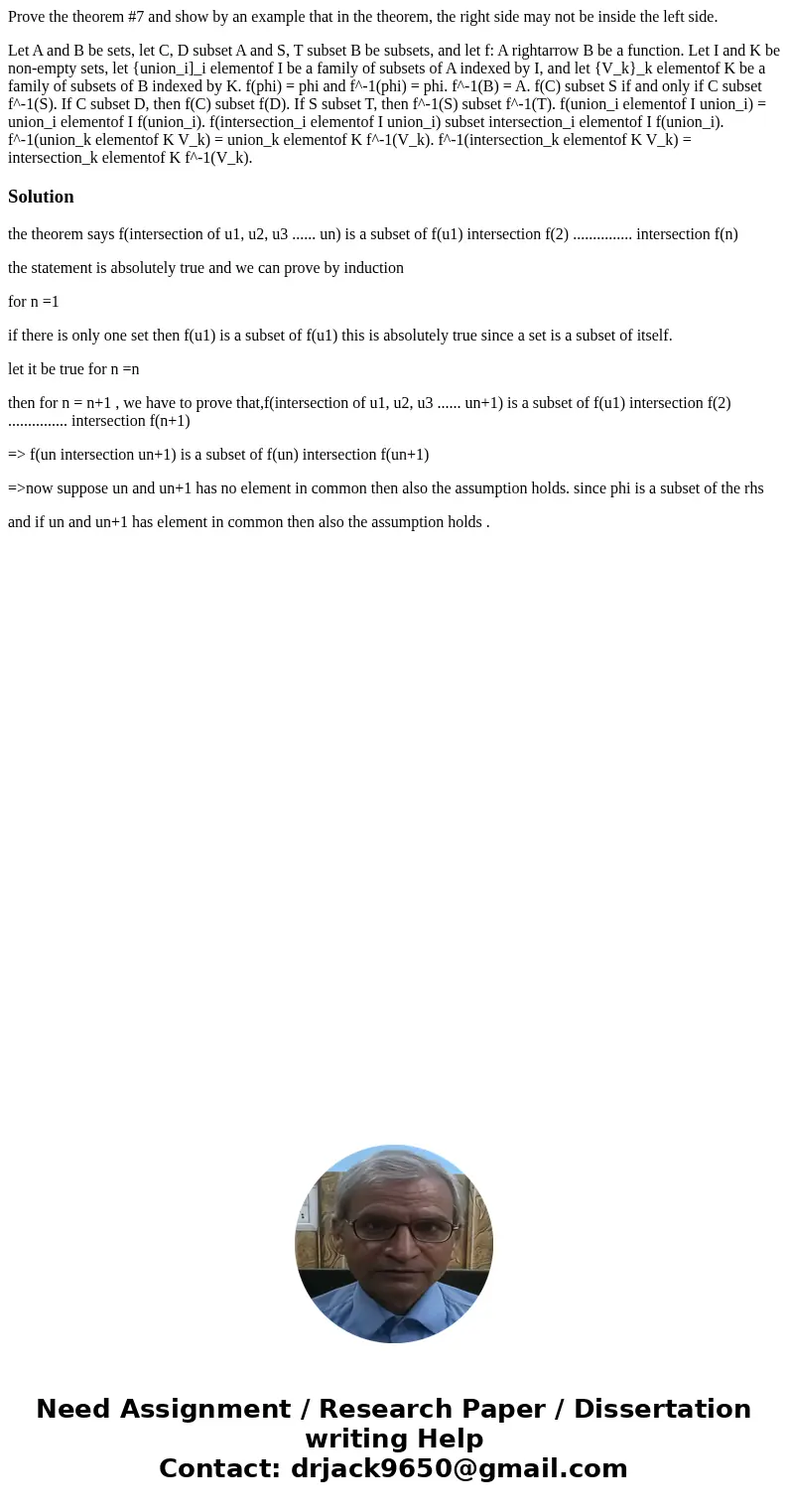Prove the theorem 7 and show by an example that in the theor
Prove the theorem #7 and show by an example that in the theorem, the right side may not be inside the left side.
Let A and B be sets, let C, D subset A and S, T subset B be subsets, and let f: A rightarrow B be a function. Let I and K be non-empty sets, let {union_i]_i elementof I be a family of subsets of A indexed by I, and let {V_k}_k elementof K be a family of subsets of B indexed by K. f(phi) = phi and f^-1(phi) = phi. f^-1(B) = A. f(C) subset S if and only if C subset f^-1(S). If C subset D, then f(C) subset f(D). If S subset T, then f^-1(S) subset f^-1(T). f(union_i elementof I union_i) = union_i elementof I f(union_i). f(intersection_i elementof I union_i) subset intersection_i elementof I f(union_i). f^-1(union_k elementof K V_k) = union_k elementof K f^-1(V_k). f^-1(intersection_k elementof K V_k) = intersection_k elementof K f^-1(V_k).Solution
the theorem says f(intersection of u1, u2, u3 ...... un) is a subset of f(u1) intersection f(2) ............... intersection f(n)
the statement is absolutely true and we can prove by induction
for n =1
if there is only one set then f(u1) is a subset of f(u1) this is absolutely true since a set is a subset of itself.
let it be true for n =n
then for n = n+1 , we have to prove that,f(intersection of u1, u2, u3 ...... un+1) is a subset of f(u1) intersection f(2) ............... intersection f(n+1)
=> f(un intersection un+1) is a subset of f(un) intersection f(un+1)
=>now suppose un and un+1 has no element in common then also the assumption holds. since phi is a subset of the rhs
and if un and un+1 has element in common then also the assumption holds .

 Homework Sourse
Homework Sourse